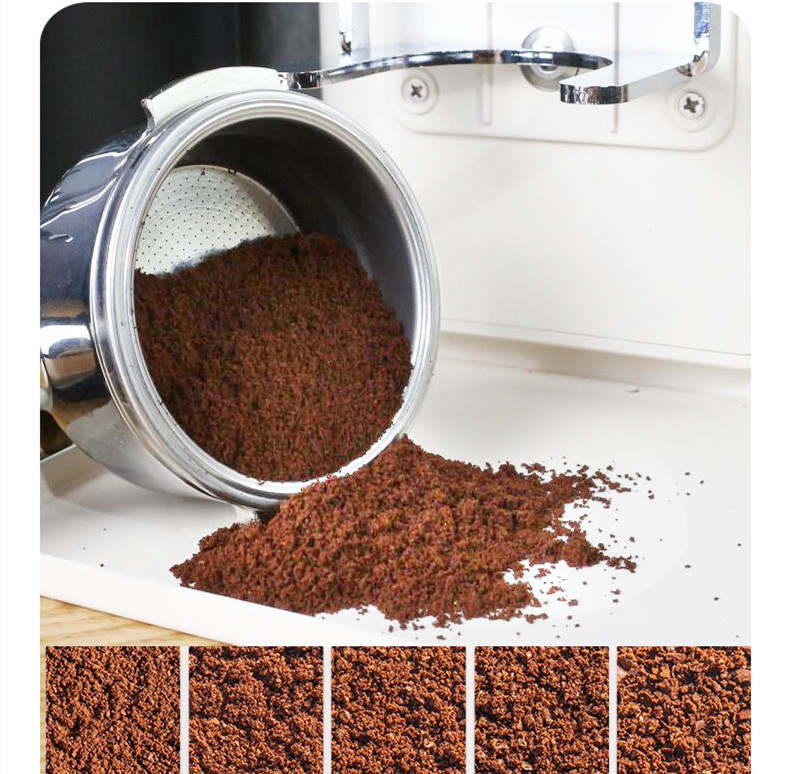Physical Inspection of Green Coffee Beans Before Roasting
Identifying Defective Beans and Foreign Objects
Green coffee beans often contain moldy, fermented, or insect-damaged beans, which introduce off-flavors like bitterness or astringency. Manual sorting remains the industry standard, as mechanical systems can only detect color discrepancies. For example, Kenyan coffee exporters reject beans with visible cracks or uneven roasting potential, ensuring only 60% of harvested beans pass quality checks. Foreign objects such as stones, pebbles, or wood fragments pose risks to roasting equipment. A 2024 case study revealed that 12% of roasters experienced blade damage due to undetected stones in unsorted batches.
Screen Size and Density Considerations
Coffee beans are graded using mesh screens, with sizes ranging from 14 to 20 mesh (6.35–7.13mm). Larger beans, typically grown at higher altitudes, exhibit denser structures and slower maturation, resulting in complex flavor profiles. Colombian Supremo beans, for instance, require 17+ mesh screens and are prized for their balanced acidity and sweetness. Smaller beans, while not inherently inferior, may demand adjusted roasting profiles. A 2023 experiment showed that 14-mesh beans from Brazil’s Cerrado region required 15% longer development time to achieve similar sweetness as their Supremo counterparts.
Moisture Content and Storage History
Optimal moisture levels (9–12%) prevent uneven roasting and mold growth. Beans stored in humid environments often absorb excess moisture, leading to inconsistent heat absorption during roasting. A 2022 study found that beans with 14% moisture content required 20% higher initial temperatures to compensate for delayed thermal penetration. Roasters should verify moisture levels using handheld meters and reject batches stored in non-climate-controlled facilities for over six months.
Roaster Compatibility with Coffee Bean Characteristics
Drum Design and Heat Distribution
Rotary drum roasters rely on consistent heat transfer to develop flavors. Beans with irregular shapes or sizes disrupt airflow, causing hotspots. For example, Ethiopian Yirgacheffe beans, known for their small size and high density, require slower drum rotation speeds (45–50 RPM) compared to larger Colombian beans (60–65 RPM). Direct-fire roasters with perforated drums excel at highlighting floral notes in delicate beans, while semi-hot-air systems reduce scorching risks for oily varieties.
Airflow and Exhaust System Capacity
Proper ventilation prevents chaff buildup and maintains stable roasting temperatures. Beans with high silver skin content, such as Indonesian Sumatran varieties, generate 30% more chaff than washed Central American beans. Roasters without automated chaff collectors must increase exhaust frequency by 40% during Sumatran batches to avoid flameouts. A 2021 analysis linked 25% of roaster malfunctions to clogged exhaust ducts caused by inadequate chaff removal.
Grinding Mechanism and Bean Hardness
Conical burr grinders handle dense beans more effectively than flat burrs, which struggle with overly hard or brittle varieties. Guatemalan Antigua beans, with a hardness rating of 8.5 on the Mohs scale, require pre-cracking at lower temperatures (160–170°C) to prevent burr damage. Soft beans like Mexican Chiapas (6.5 Mohs) demand higher preheat temperatures (180–190°C) to achieve proper cell wall breakdown.
Post-Sorting Processing for Roasting Efficiency
Pre-Roast Drying and Conditioning
Beans stored in cold climates often require rehydration to prevent cracking. A 2024 trial demonstrated that exposing Peruvian Cajamarca beans (stored at 10°C) to 22°C ambient air for 12 hours reduced cracking incidents by 65% during roasting. Conversely, beans from arid regions like Yemen’s Harazi Mountains benefit from 24-hour humidity stabilization (60–65% RH) to soften parchment layers.
Batch Consistency and Roast Profiling
Uniform bean sizes enable precise roast curve replication. A 2023 study comparing mixed-size Kenyan AA/AB batches with single-origin AA batches found a 18% variation in development time consistency. Roasters using software-controlled profiles should calibrate their systems monthly, as seasonal bean density changes (e.g., 5% increase in Brazilian Santos beans post-harvest) alter thermal absorption rates.
Waste Management and Byproduct Handling
Chaff and silver skin account for 2–3% of roasted bean weight but pose fire hazards if not managed. Roasters equipped with cyclonic separators reduce chaff-related downtime by 70% compared to manual collection methods. A 2022 sustainability report highlighted that roasters implementing closed-loop chaff recycling systems cut waste disposal costs by 40% while producing compostable material for coffee farms.
By integrating rigorous sorting protocols with equipment-specific adjustments, roasters can optimize flavor development and operational efficiency. Attention to bean physicality, roaster mechanics, and post-processing workflows ensures consistent quality across diverse coffee origins.


